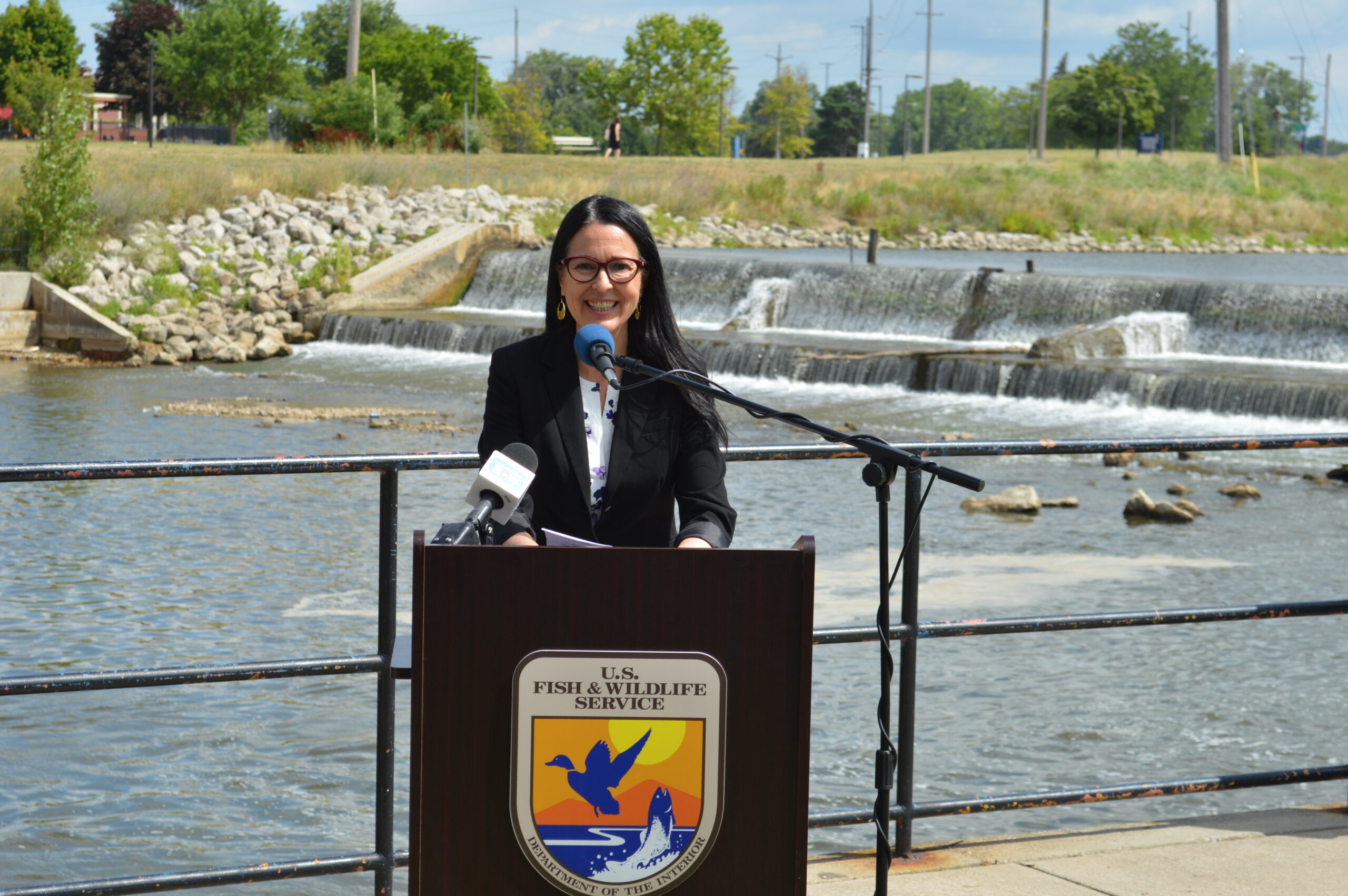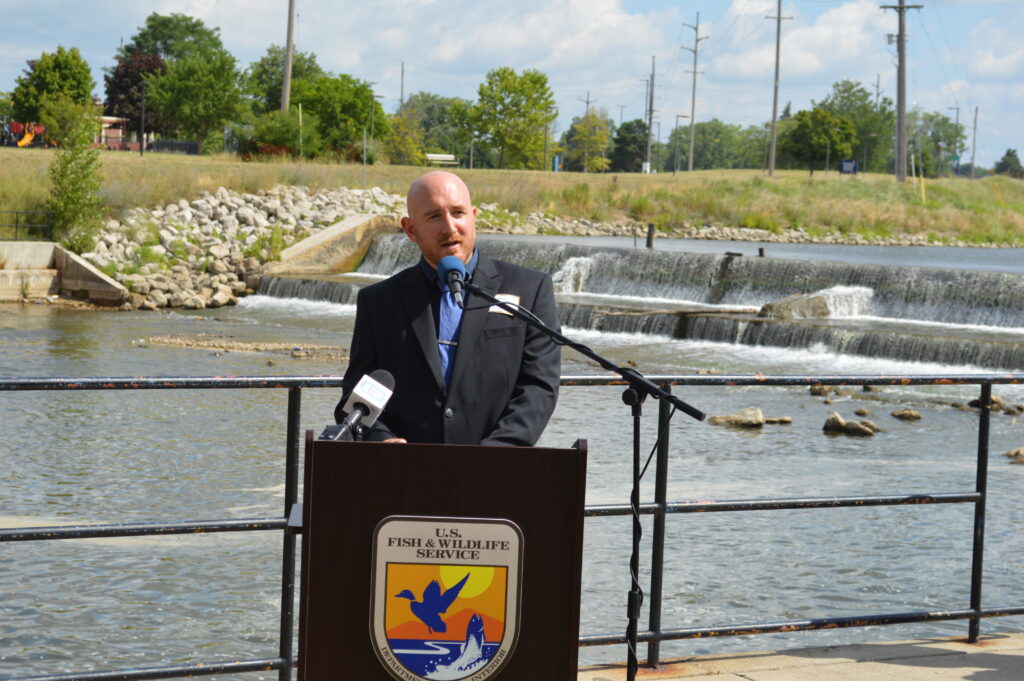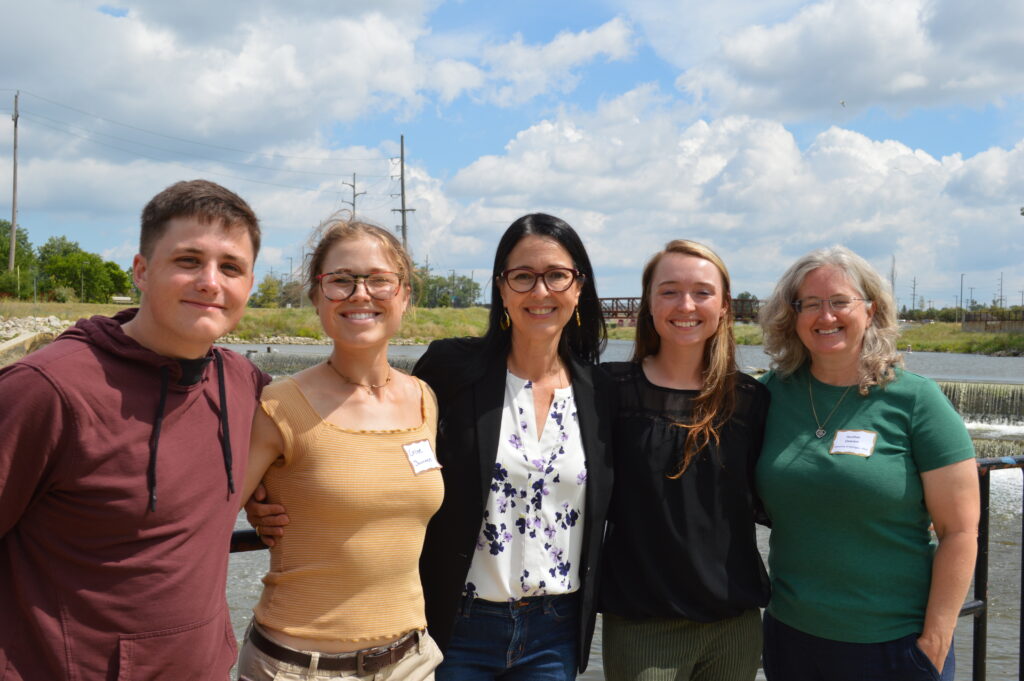Work, research continues on Flint's Hamilton Dam removal

Imagine wildlife quietly making its way along the shoreline of the Flint River as kayakers paddle past the William S. White Building and anglers excitedly discuss their days' catch. Those visions could soon become reality when the last remaining pieces of the century-old Hamilton Dam, located in the heart of the UM-Flint campus between Harrison St. and the pedestrian bridge, are removed.
"We are now looking at the (removal of the dam) in terms of when, not if," said Shannon Lott, deputy director of the Michigan Department of Natural Resources at a July 28 press conference staged riverside on the UM-Flint campus.
Lott joined Shannon Estenoz, U.S. assistant secretary for fish and wildlife and parks, and several local leaders, including Flint Mayor Sheldon Neeley and Patrick Scanlon, executive director of the Flint River Watershed Coalition.

The foursome discussed the more than $850,000 in federal grants the Genesee County Parks Department received earlier this year to remove the dam's remaining concrete weir. The removal project is expected to begin in spring 2023 and take multiple years to complete.
"You are going to see pretty quickly that this river is going to remember what it used to be," Estenoz said. "Failure of imagination is the worst failure because it can prevent a project from getting started. People look at dams and roads as examples of hard infrastructure and it may be hard to imagine them differently or even being gone."
She added the work previously carried out to remove the dam represents triumph of imagination, partnership and community.
It also represents the triumph of science in a number of ways.
First, removing the dam will provide a better habitat for the fish, insects and other aquatic species that currently live in or near the river, according to Heather Dawson, UM-Flint professor of biology.
"Once the weir is removed, it will allow sediment and substrate to flow freely, benefitting the fish and insects found both upstream and downstream as there is little existing habitat for them downstream at the moment," Dawson said.
Dawson and her research team have been studying the Flint River since 2019, gathering baseline and pre-restoration data, and have documented more than 30 species of fish at the dam site and 10 aquatic insect species inhabiting the upstream portion of the river.
Dawson says that once the weir, or the low piece of the dam built across the river that helps raise the level of water upstream or regulate its flow, is removed, the number and variety of aquatic species will increase. "Changes in insect species and fish not normally observed upstream should be seen fairly quickly," she said.
One species that the removal of the weir should help boost is the lake sturgeon, a fish the DNR is actively trying to rehabilitate. "The removal of the weir will enhance lake sturgeon restoration efforts in both the Flint and Saginaw river watersheds by creating additional rearing habitat for juvenile lake sturgeon above the barrier and spawning habitat for returning adults," said Scott Koproski, U.S. Fish and Wildlife project leader.
Funding to remove the weir was made available through President Biden's Bipartisan Infrastructure Law. The law has helped fund projects like the National Fish Passage Program, founded in 1999, which is aimed at restoring aquatic connectivity throughout the United States.
The program has since reconnected over 61,000 miles of upstream habitat for fish and other wildlife, according to the U.S. Fish and Wildlife website.
"Flint is about to add 24 miles of river channel, and I want to use the city as an example of what's possible," said Estenoz.
Dawson, along with Arianna Elkins, a senior from Davison, Chloe Summers a graduate student from Davison and Maxwell Buxton, a senior from Oakland Township had the opportunity to meet with Estenoz and other officials prior to the press conference to talk more about what lies ahead for the populations of fish, insect and other aquatic species that call the Flint River home.

Related Posts
No related photos.
Madeline Campbell
Madeline Campbell is the communications specialist for the College of Arts & Sciences. She can be reached at [email protected].